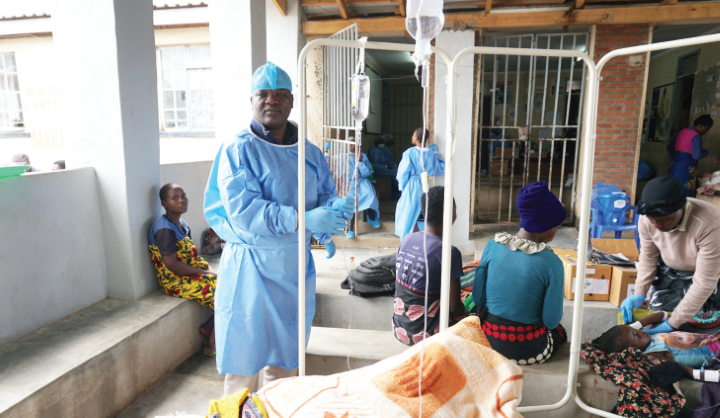Scramble for same old cake
With rapid population growth, Malawi is struggling to provide quality education, jobs, healthcare and other basics.
According to the 2018 census, the country’s population has increased by 35 percent from 13 million to 17.6 million within a decade.

The count is four times the 1966 population and 1.3 times that of 2008.
At the 2.9 percent annual growth rate, the population is projected to double to about 35 million in 24 years.
However, new evidence by economist Kennedy Machira, from Lilongwe University of Agriculture and Natural Resources, points to a bleak future—with the ever-increasing population competing for the “ever-dwindling resource”.
Machira notes that most services are inadequate for the bulging population and it could get worse unless women if a Malawian woman continues having an average of four to five children in a lifetime.
He explains: “At present, the healthcare infrastructure is not enough to aid universal health coverage. However, if the fertility rate declined from the current 4.4 to 2.3, government would save over $10.86 billion
[about K8.1 trillion]of the healthcare budget by 2050.
“This would mean fewer hospitals and health centres being built. At the current total fertility rate, Malawi would need 1 864 more health facilities by 2050. But reducing the rate to 2.3 would translate to only 1 493 more being built.”
Undoubtedly, a larger population would require more financial resources for health.
Empowering every woman to have fewer children would help the country achieve the health-related Sustainable Development Goals (SDG).
This includes reducing maternal mortality; reducing newborn and child mortality as well as ending Aids, malaria and other communicable diseases.
The savings would also be used to increase health financing and retain health workers.
With a fertility rate of 2.3, the economist argues, the country would need to educate 3.6 million fewer students, recruit 96 00 fewer new teachers and build 7 000 fewer schools.
“It is already difficult to meet the needs of existing students, but with fewer students, less funding for education would be needed. These savings could be used to enable further educational improvements,” he argues.
Machira also says a slower population growth would also cut the demand for jobs.
He estimates that the country would require 2.2 million fewer jobs by 2050 if the fertility rate decreased.
The census shows there are 8.3 million economically active people in the country.
However, many new jobs must be created each year to reduce unemployment and support the youth entering the labour force.
According to the International Labour Organisation, the country required about 250 000 new jobs in 2015.
Machira’s graphs show the demand would swell to 15.1 million by 2050 if the number of children per woman remained between four and five.
However, the study shows, the country would need 12.9 million new jobs if the fertility rate went down to 2.3.
“A large increase in population can cause a serious need for job creation. Unemployment and under-employment are already severe, especially among young people,” he argues.
Low population growth would also reduce the scramble for farmland, housing, urban infrastructure, water and electricity.
To achieve the desired fertility rate, United Nations Population Fund (UNFPA) population and development specialist Bill Chanza says the country needs to recommit to the promises made at the International Conference on Population and Development (ICPD) in 1994. The pledges include universal access to education, reduced infant and child mortality, reduced maternal mortality and improved access to sexual reproductive health, including family planning.
Since 1994, the country’s fertility rate has declined from 6.7 to 4.4 while access to modern contraceptives has risen from seven percent to 58 percent.
But Banja La Mtsogolo (BLM) policy and advocacy officer Simeon Thodi noted that there is still high unmet need for contraceptives-—9 percent among all married women and 22 percent for adolescents.
At 40 percent, the unmet need is even higher among the sexually active unmarried women. This hampers efforts to slow population growth.
“The country is not growing any bigger,” he says. “With the resource envelope remaining the same, overpopulation exerts more pressure on the provision of social services including health, education, and security among others. This compromises people’s quality of life.”
Chanza calls for concerted efforts to end early child-bearing among girls by improving access to family planning for the youth for instance. Machira recommends continued implementation of universal access to sexual and reproductive health and rights, targeting young people and the under-served.





